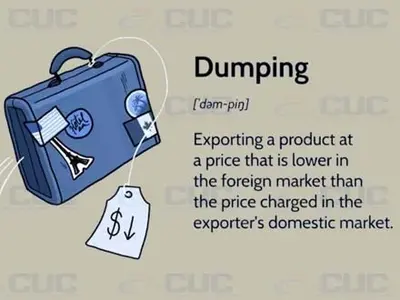
In today's globalized economy, the supply chain has become a crucial link connecting economies worldwide. With China being a major manufacturing hub, trade relations with Canada are becoming increasingly frequent. However, cross-border trade involves numerous processes, and simplifying the transportation of Chinese goods to Canada for efficient supply chain management is a pressing issue for businesses and related organizations.
In the process of shipping goods from China to Canada, optimizing logistics solutions is key to lowering transportation costs. Firstly, based on the nature, quantity, and transportation requirements of the goods, selecting the most suitable mode of transportation, such as sea freight, air freight, or land transport, is essential. Secondly, strategically plan transportation routes to minimize transit points and reduce transportation time. Additionally, introducing advanced logistics management systems and technologies, such as the Internet of Things (IoT) and big data, enables real-time monitoring and precise management of the entire goods transportation process, enhancing transportation efficiency.
Collaborating with professional logistics companies is also an effective way to reduce transportation costs. These companies possess extensive experience in international transportation, providing businesses with customized logistics solutions to lower transportation costs and improve competitiveness.
Supply chain collaboration is a crucial guarantee for achieving efficient supply chain operations. In the process of shipping goods from China to Canada, involving multiple stages and participants, including manufacturers, logistics providers, customs, etc., strengthening communication and collaboration among all parties to form close supply chain partnerships is key to enhancing operational efficiency.
Specifically, through methods like information sharing, collaborative planning, and risk-sharing, supply chain collaboration can be realized. For example, manufacturers can communicate transportation requirements in advance with logistics providers, allowing them to arrange transportation resources ahead of time. Customs can enhance information exchange with all parties to improve clearance efficiency. These measures optimize the operational processes of the supply chain, reduce operating costs, and enhance overall operational efficiency.
Cross-border trade involves various risks, such as political risks, exchange rate risks, and transportation risks. Therefore, improving risk management mechanisms is an important measure to ensure the stability of the supply chain.
Firstly, businesses should conduct comprehensive assessments of various risks and formulate corresponding response strategies. For example, to mitigate political risks, businesses can diversify market layouts and establish flexible supply chain networks. To address exchange rate risks, businesses can use financial derivatives for hedging.
Secondly, strengthening cooperation with insurance companies to purchase appropriate insurance products helps alleviate potential losses from risks. Simultaneously, establishing emergency response mechanisms enables quick responses and handling of unforeseen events, ensuring the continuity and stability of the supply chain.
Technological innovation is a crucial driver for optimizing the supply chain. In the process of shipping goods from China to Canada, introducing advanced technologies such as artificial intelligence and blockchain enables intelligent management of the supply chain.
For instance, leveraging artificial intelligence technology allows in-depth mining and analysis of supply chain data, providing robust support for decision-making. The use of blockchain technology ensures the authenticity and transparency of supply chain information, enhancing trust among all parties. Additionally, automation equipment and robotics technology can be introduced to increase the automation level of the supply chain, reducing labor costs.
Through technological innovation, real-time monitoring, precise prediction, and intelligent decision-making for the supply chain can be achieved. This enhances operational efficiency and response speed, creating greater value for businesses.
In conclusion, mastering the supply chain and streamlining the process of shipping goods from China to Canada requires businesses to focus on optimizing logistics solutions, supply chain collaboration, improving risk management mechanisms, and technological innovation. Through continuous efforts and practical implementations, businesses can achieve efficient management of the supply chain, providing robust support for the smooth progress of cross-border trade.
 National anti-dumping product inquiry guideSeptember 13, 2023Anti-Dumping Duty? What is it?When we comes to anti-Dumping, we need to know what dumping is first.Dumping is a process wherein a company exports a product at a price that is significantly lower than ...view
National anti-dumping product inquiry guideSeptember 13, 2023Anti-Dumping Duty? What is it?When we comes to anti-Dumping, we need to know what dumping is first.Dumping is a process wherein a company exports a product at a price that is significantly lower than ...view Shipping LCL vs FCL: Making the Right Choice for Your CargoApril 20, 2024Introduction to LCL and FCL ShippingIn the realm of international freight transport, two terms often emerge: LCL and FCL. Understanding the nuances between them can significantly impact your logistics...view
Shipping LCL vs FCL: Making the Right Choice for Your CargoApril 20, 2024Introduction to LCL and FCL ShippingIn the realm of international freight transport, two terms often emerge: LCL and FCL. Understanding the nuances between them can significantly impact your logistics...view Navigating Global Trade: How to Choose the Right International Courier Service ProviderSeptember 26, 2023In the age of globalization, businesses of all sizes have access to international markets, and global trade is more accessible than ever before. To succeed in this dynamic landscape, choosing the righ...view
Navigating Global Trade: How to Choose the Right International Courier Service ProviderSeptember 26, 2023In the age of globalization, businesses of all sizes have access to international markets, and global trade is more accessible than ever before. To succeed in this dynamic landscape, choosing the righ...view Guides For Importing From China To USAJune 27, 2023As an importer in the USA, it is essential to have a reliable and efficient shipping partner in China. Shipping from China to the USA can be a daunting task, especially for beginners. However, with th...view
Guides For Importing From China To USAJune 27, 2023As an importer in the USA, it is essential to have a reliable and efficient shipping partner in China. Shipping from China to the USA can be a daunting task, especially for beginners. However, with th...view